

Cannabis legalization is spreading like wildfire across the US, Canada, and in many other countries around the world. Many people are finally allowed to legally grow their own supply of cannabis!
Are you ready to start growing weed?
Growing cannabis can seem like it’s complicated, but often it only seems that way because you haven’t been given the right information. A lot of people unintentionally make growing harder than it needs to be, but that ends now!
This cannabis growing guide will help you discover the best way to grow cannabis, for your unique situation.
Find a grow style for…
Growing cannabis plants is actually pretty straightforward, and almost anyone with a few extra minutes a day and a spare closet or a garden in the backyard can grow their own professional-quality buds at home.
What does a cannabis plant need to thrive?
In order to thrive and grow, every cannabis plant needs:
When growing cannabis indoors or outdoors, you will need to ensure that it gets the proper amount of these 6 resources.
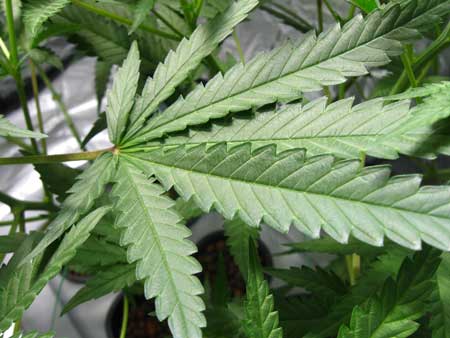
How long does it take to grow cannabis?
If you planted a cannabis seed today, when is the soonest you could be actually smoking your harvest? Probably about 9 weeks with a quick-finishing autoflowering strain.
Indoor grows tend to be shorter than outdoor grows since you have more control over when the plant starts budding. Auto-flowering grows also tend to be very short. But with shorter grows, you also tend to get smaller yields. Certain strains and certain outdoor grows can take up to 7 months or more.
On average, I’d say it takes a grower about 3 – 5 months to grow, harvest, and cure their own buds.
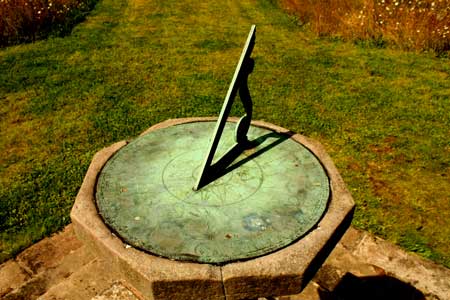
Don’t Make the 3 Most Common Cannabis Growing Mistakes!
10-Step Beginner’s Guide to Growing Cannabis
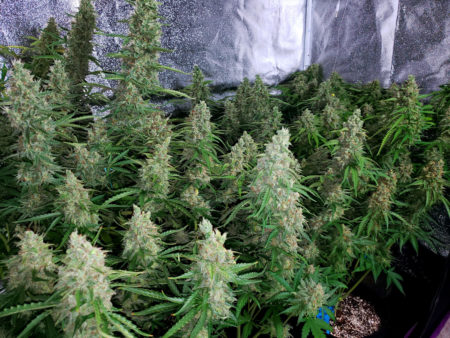
Indoor Growing
Growing indoors is much more private than growing outdoors and you also get more control over your grow.
Indoor cannabis grow can be surprisingly cheap to get started and maintain, especially if you plan on growing just a few plants.
Take a look at a few completed indoor cannabis grow journals and my personal cannabis grow journals to get an idea of how much you can expect to harvest in different types of indoor setups. My latest 315W LEC grow yielded over a pound (497g) of dried and cured cannabis.
You have more control over everything in an indoor growing environment, which means that indoor growers can consistently produce dank buds. However, this dank weed-growing power comes with more responsibility. As an indoor grower, your plants are 100% reliant on you your care if they are to survive. If you don’t provide everything your plants need, they will die.
What space works best?
You can grow cannabis almost anywhere that has easy access to water and fresh air…
When thinking about where to grow indoors, you should also consider the temperature (also referred to as ‘temps’) of your grow space and remember your temps will rise once you have your grow lights running!.
Young growing cannabis plants grow fastest when temps a bit warmer, in the 70-85°F (20-30°C) range.
When plants are a bit older, in the budding/flowering stage, it’s best to keep temps slightly cooler, around 65-80°F (18-26°C) to produce buds with the best color, trichome production and smell.
Because temps are so important, it’s best to be able to have some amount of control over the temperature of your grow area. When growing indoors, your grow lights will give off heat. Generally, the more powerful your lights, the more heat they give off.
If you want to install a lot of bright lights in a small space, you will likely have to install an air conditioner in addition to your exhaust system to make sure you keep your temps in the right range.
If you’re growing just a few plants in a grow tent or box, usually you can install a fan to pull hot air away from the hot lights and out a window to keep things cool enough.
Some lights tend to cause more heat problems than others, and we’ll help you find the right lights for your space in Step 2.
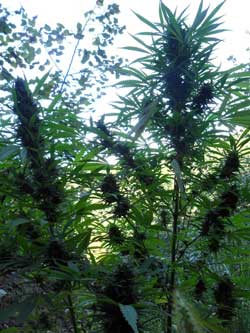
Outdoor Growing
Growing outdoors is cheaper to get started since you don’t have to get grow lights or create an indoor grow area, though you will have to worry about privacy/stealth, possible pollination, people stealing your plants, bugs, deer and other unexpected outdoor visitors.
However, if you pick the right strain and live in a good environment, it can be much cheaper to grow outdoors, since you don’t have to provide everything for your plants. The sun will do a lot of the most cost-heavy work for you by providing a free grow light.
Of course, when you’re growing outside, it’s not always possible to control the environment perfectly. If it’s dry, you will need to water your plants. If it’s too rainy, you need to protect your plants from getting overwatered.
When it comes to temperatures, a good rule of thumb about cannabis plants is if it’s too hot for you, it’s probably too hot for your plants. And just like humans, cannabis plants can die if exposed to freezing or too-hot temps.
So if you know it’s going to be extremely hot or cold where you live, you may need to take extra steps to protect your plants from the elements, like setting up a small greenhouse.
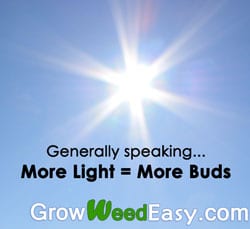
There are lots of different grow lights for cannabis, including:
The Sun
When you’re growing with the sun, you need to make sure that your plants are getting at least 8+ hours of direct sunlight each day for the best results.
It’s best that your plants get direct sunlight from at least 10am-4pm, and more light is better. Because of the high light needs of the cannabis plant (it needs more light than many other types of plants), it is not well suited to growing in a window (though I’ve seen plenty of growers start their seeds in sunny windows before moving their plants to a more suitable final location).
Household Lighting: Compact Fluorescent Light Bulbs (CFLs) & Household LEDs
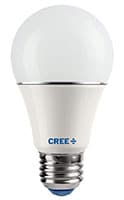
Household LEDs are what people commonly use to light up their homes. They aren’t really made for growing plants but can be a good way to get your feet wet in the growing world without a significant investment. They lack the power of dedicated grow lights but can get the job done. Home LEDs like these are dirt cheap, and you can usually buy them from any big-box store without arousing suspicion. Not ideal, but they can be used to “dip a toe” into growing and get an idea whether you want to invest in a real grow light.
Note: There are super cheap LEDs like the HLG 100 R-spec that gets amazing bud quality growing weed and costs under $150. It’s a small light that barely puts off any heat and can be kept in a space as short as 3-4 feet (learn how to grow mini plants) and still can yield several ounces. I highly recommend investing in something like that over household LEDs.
Fluorescent Lighting (T5 High Output)
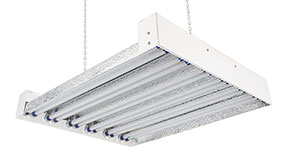
These lights are traditionally made for seedlings and plants that need lower light intensity than cannabis. If you do get fluorescent lighting, I recommend sticking with a High-Output T5 light since they are the brightest option in this group. Even so, I generally recommend changing to LED grow lights for the cannabis flowering stage unless you do major plant training (to keep plants very short) since these lights have a short light brightness range and must be kept very close to the tops of your plants. Another issue with fluorescent lighting is they tend to get very hot compared to the amount of electricity used. Lastly, fluorescent lights get only 1/4 -1/2 the yields per watt compared to LED grow lights. Learn more about growing cannabis with fluorescent lighting.
LEC (CMH) grow lights
LEC (Light Emitting Ceramic) is a brand name for a type of light (CMH – Ceramic Metal Halide) that has existed for quite a while. This type of light has come back into vogue after some rebranding, partly because it has some very positive traits for growing cannabis compared to HPS lighting. For one, LECs have a more natural color that makes it easier to care for and diagnose plant problems. Plus, it’s a lot better for security to have a light that doesn’t scream “WEED GROWING HERE!” like the unearthly yellow hue of an HPS. They produce significant levels of UV light, which can possibly increase trichome production. Additionally, they don’t seem to emit EMI (Electro-Magnetic Interference) as much as their noisy HPS cousins which means you’re less likely to have a HAM radio enthusiast accidentally tracking down your grow. The plants grew surprisingly fast under a 315 LEC and we were impressed by the yields we achieved on our first grow.
LED grow lights
LED grow lights are much more efficient and get better bud quality/yields/potency than household LEDs or fluorescent lighting. They are top-tier grow lights on par with any grow lights including HID lighting (HPS, LEC). They’re visually attractive, easy to use, and tend to be more appealing to growers because they’re not as ‘old-fashioned’ (though they often cost more). Plus in some tests, they’ve been shown to produce bud that is actually more potent than the same clones grown under different grow lights. In fact, LEDs are the only grow lights that have seen major technological research and development in the past 10 years, and the technology is still improving every day as LED manufacturer’s fine-tune their LEDs with extensive testing on live cannabis plants.
LED grow lights work great for growing cannabis and some companies have been refining their models for years (the combination of parts is almost like a company’s recipe). Each LED model is different and needs to be kept a different distance away from your plants. It can sometimes be hard to find any “standard” advice about growing with LEDs, yet these days there are quite a few brands that are well-tested and trusted by cannabis growers and these brands tend to have good support for questions. When in doubt, it’s always a good idea to just ask the manufacturer about how far away the lights should be kept, as that’s where new growers are most likely to mess up.
Metal Halide (MH) & High-Pressure Sodium (HPS)
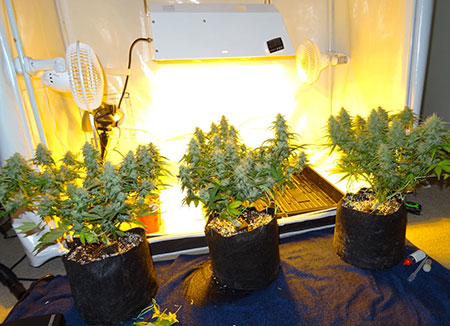
MH/HPS grow lights (like the light pictured here) are a type of “HID” light like LECs. A combination of MH/HPS is what most commercial growers use when growing cannabis indoors. They are surprisingly cheap to buy and set up, especially considering how incredibly powerful they are.
HID lights work very well for growing cannabis and produce consistently good results indoors. However, the higher-wattage HID lights tend to run hot and can leave a big mark on your electricity bill. You definitely want to make sure you’re getting the exact right lights for your space so you don’t pay for more light than you really need. HID lighting (HPS in particular) has another problem in that it’s been less popular over the last few years. This has made it increasingly difficult to find quality models if you’re not looking for a huge 1000W.
→Don’t know what type of lighting to pick? Choose your grow type based on your desired yields and starting cost…
Example of a 4’x4′ grow tent (easily yield a pound)
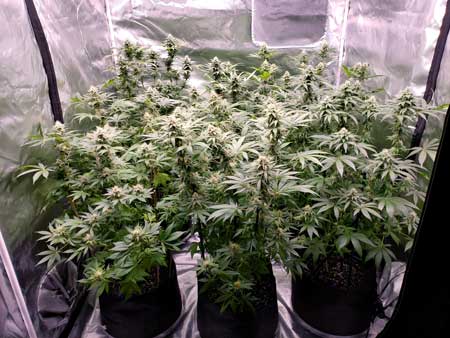
Each growing medium that you can use has different care and watering requirements.
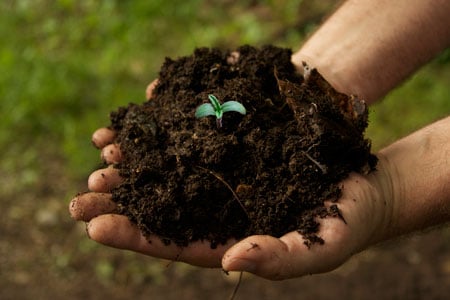
These are the most common grow mediums:

What’s the Best Soil? Your absolute best option would be to compost your own soil (or purchase composted soil) which gets incredible taste results but does take a little more work (or money if you buy it).
For those of us who prefer pre-made mixes, I recommend starting with the popular Fox Farms Ocean Forest soil (often referred to as FFOF) since it’s already supplemented with plenty of nutrients that work very well for young cannabis plants. It’s a rich yet still somewhat airy soil that is made for plants just like cannabis and has been used by growers for years.
If you have limited soil options, choose an organic potting mix which is usually available in some form in the gardening section of any big-box store. As long as you use good cannabis nutrients (more on that below), a regular organic potting mix will work just fine.
Common cannabis-friendly potting mix brands in the US:
Pick up a bag of perlite (found in the garden section) to help the soil drain better unless it already contains perlite. Perlite looks like little white rocks and should be mixed in so you have about 70% soil and 30% perlite. Should you add perlite to your soil?
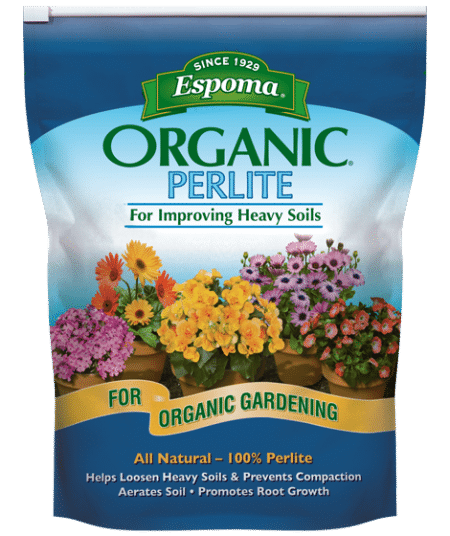
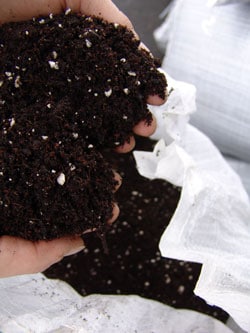
If you’re having a tough time deciding on a grow medium, you might want to think about starting with a mix of coco coir and perlite. It’s easy and low-maintenance. That’s how I got started growing (with CFLs as grow lights) and it’s also what I used in my 1-pound 315W LEC grow. Growing with coco coir can be a good choice for beginners because it’s cheap, holds water well, and doesn’t have as many of the problems associated with soil (bugs, root problems, etc.). Yet since it’s hand-watered, it’s intuitive and has a lot of the ease of soil growing.
I’ve heard many people recommend against growing cannabis hydroponically for your first time because it’s “too complicated,” yet I’ve seen growers succeed at every grow type even on their very first grow. If you really want to grow hydroponically, I recommend you don’t waste your time doing something else first. If you’re passionate about hydroponic growing and do your research before you get started, there’s no reason you won’t be able to do incredibly well your first time. Read our bubbleponics tutorial to see how GrowWeedEasy.com co-creator Sirius got started growing cannabis with top-fed DWC on his very first grow.
Soil growers – unless you’re growing with composted super soil, you will need to get cannabis nutrients made for soil to make sure your plants produce at their best. Even if you started with an amended soil like FFOF, you will still need to start adding nutrients once you reach the flowering/budding stage as cannabis plants are heavy feeders and your plants will have already used up most of the nutrients in the soil by the time budding begins.
One nutrient system to rule them all…
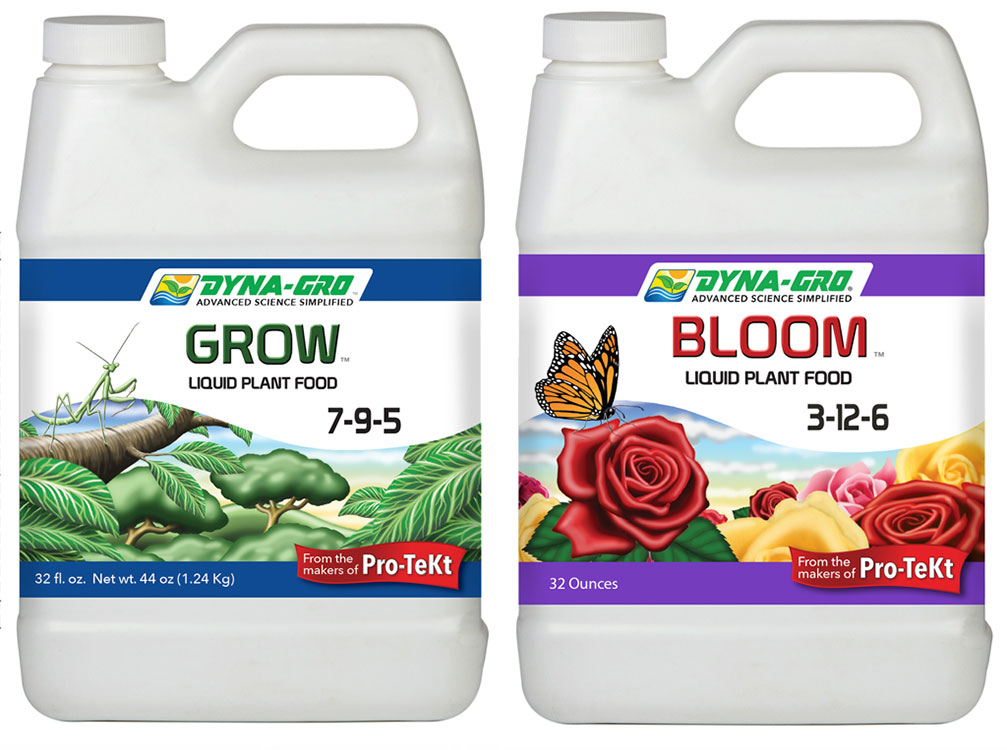
Looking for a suggestion? One of the simplest (yet inexpensive) nutrient systems that work extremely well for beginning cannabis growers is Dyna-Gro (Grow, Bloom)
Dyna-Gro can be used at half-strength in soil, water, coco coir, or any growing medium and works amazingly well for growing cannabis. It does not build up salt in your growing medium like many other inexpensive fertilizers, and it will never clog your hydroponic system.
Just use the “Grow” bottle during the Vegetative stage and the “Bloom” bottle during the Flowering stage. You can actually follow the instructions on the bottle. It’s super simple.
Like all nutrient systems, avoid starting at full strength or it can burn your plants! Learn more about nutrient burn. Only raise the dosage if you notice that your lower leaves are turning yellow and falling off (except in the last 2-4 weeks before harvest, when yellowing lower leaves is a natural part of the maturation process)
Is my tap water “good enough” for growing cannabis?
Before I address pH, let’s talk about the “hardness” of your water…
The “hardness” of water describes how much extra “stuff” (like minerals and/or impurities) is contained in your regular tap water. You can contact your local water supplier for more information (ask for a “municipal water report”), or you can test the PPM of your water at home. Generally, as long as your water has less than 200-300 PPM (parts per millions) of extra stuff, it should be okay to use it for growing. If you are worried about the quality of your tap water, you can choose to use purified or Reverse Osmosis (RO) water, but you may then need to add extra Cal-Mag and possibly a few other supplements to help make up for the random minerals and nutrients that are normally found in tap water. I’ve personally always grown with straight tap water (in a big city in California with a natural PPM around 370, which is pretty high), and I’ve never had a problem. However, some places have very hard water or tap water with unacceptable impurities, and growers in these areas will likely need to use purified water to get the best results.
It’s important to maintain the pH of your root environment to prevent nutrient problems.
The easiest way to do that is to test the pH of your water before you water your plants or add water to your reservoir.
There are certain types of grows (such as when growing cannabis in organic composted super soil) where you don’t need to test your pH unless you run into problems. This is because with a properly composted super soil, you actually have a microbial colony living in the soil that will take care of the pH and hand-deliver the nutrients to the roots of your plants for you. However, this is a rare exception to the pH testing rule, and almost all growers need to regularly test and maintain pH for a successful grow. If you’re not growing in super soil that you have amended and composted (or purchased) yourself, testing and maintaining pH is a MUST.
Some growers will always get lucky and successfully grow weed without testing the pH of their water, but most people who don’t test for pH will start seeing signs of nutrient deficiencies and other nutrient problems.
If the pH at the plant roots is too high or too low, your plants won’t be able to absorb nutrients properly.
Even if plants do fine in the vegetative stage, cannabis plants tend to be more picky and prone to problems in the flowering/budding stage. Many growers have written in to tell me they got all the way to the flowering stage without testing pH, then were surprised that they start running into nutrient problems as soon as the plants start budding. In order to make sure this doesn’t happen to you, it’s important to get in the habit of testing pH right from the beginning!
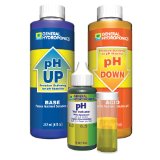
Even if the right amounts of nutrients are present, your cannabis plants simply cannot absorb them if the pH isn’t in the correct range.
It’s actually really easy, quick, and cheap to learn how to check and adjust the pH of your water, and there are “pH test kits” specifically made for this purpose.
After you get the hang of it, checking and adjusting the pH and will take you less than 3 minutes each time you water your plants. And your results (monster yields with huge buds and healthy plants) will speak for themselves.
Soil: Maintain 6.0 – 7.0 pH
Hydroponics: Maintain 5.5 – 6.5 pH
Getting the pH exactly right isn’t nearly as important as checking regularly and making sure it stays within these ranges.
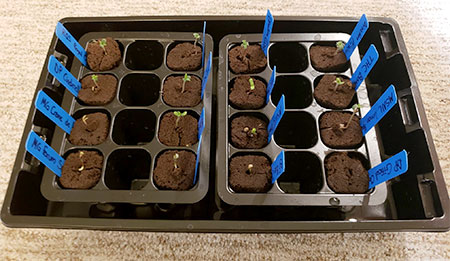
For those growers lucky enough to know other cannabis growers in real life, getting plants is usually pretty simple. Many cannabis collectives and dispensaries will happily sell you clones though they tend to be a little less liberal when it comes to selling seeds. A great advantage of purchasing clones or seeds from a trusted source is that you know you can trust the genetics you are receiving.
Yet many people do not know any other growers in real life. For these soon-to-be growers, the best option may be to purchase cannabis seeds online from a breeder or seed bank.
Surprising Fact: No one in the US has ever gone to jail or prison for simply ordering cannabis seeds online from overseas.
If you are considering this for the first time, you may be surprised to learn that, because of the way the laws about customs work in America, it is actually reliable and safe to buy your cannabis seeds online from a reputable seed bank as long as you get it from outside the US (sending seeds from one place to another in the US can get you in big trouble though!).
Get Seeds – View a list of tested & trusted seed vendors: https://www.growweedeasy.com/seeds
Get Clones – You need to know someone with live female cannabis plants if you want to get clones. Many cannabis dispensaries and collectives will sell clones to prospective growers, or you might know someone who can give you a clone. Learn how to make your own cannabis clones!
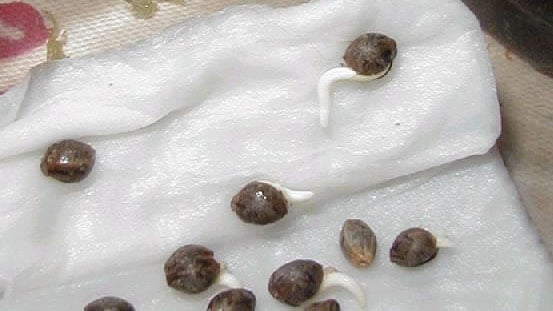
There are many methods for cannabis seed germination.
Personally, I think one of the easiest ways to germinate a cannabis seed is to place it directly in a specialized starter cube like a Rapid Rooter.
Just keep the Rapid Rooters moist (but not soaking) and warm. It can help to put your tray on a seedling heat mat. Seedlings should pop in a few days to a week.
So far Rapid Rooters with a heat mat have given me the best germination rates of any method. They work with any growing medium, too – once the seedling has emerged, you can stick the cube directly into your growing medium or hydroponic system.
Another popular way to germinate seeds is via the paper towel method.
Paper Towel Method:
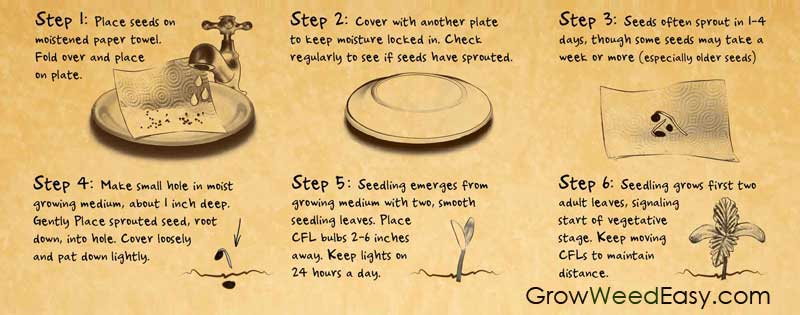
NOTE: If seedlings seem to be “stretching” upwards or growing very tall, usually it’s because they want more light.
Once your plant grows the first “regular” set of leaves, it’s pretty much officially in the vegetative stage. How long is the vegetative stage?
Cannabis plants keep getting bigger and bigger with long days (vegetative stage) and start making buds when they get long nights (flowering stage).
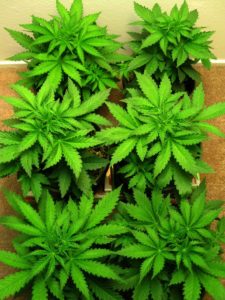
Young growing cannabis plants grow fastest when the temperature is a bit warmer than a comfortable room temperature, around 70-85°F (20-30°C). But as long as it doesn’t get freezing cold or burning hot, your plants should be able to grow in a wide range of temperatures.
In this stage, your plant will focus ONLY on getting big and strong. Buds and flowers are not part of the plant’s vocabulary yet.
If you’re feeding your plant with additional nutrients, start at half strength as it can be easy to burn your young cannabis plants. Bring to 3/4 strength one plant starts growing vigorously and if your plant displays signs of needing more nutrients even though the pH is in a good range.
Only feed nutrients at full strength if the plant is showing signs that it needs more nutrients (lower leaves are turning lime green, then yellow, then falling off – the first sign of a nitrogen deficiency, the most common type of deficiency – if the plant is not getting enough nutrients).
At this stage, you can’t tell if one of your cannabis plants is going to be a boy or a girl yet. Wait, why do I care if my plant is a boy or a girl?
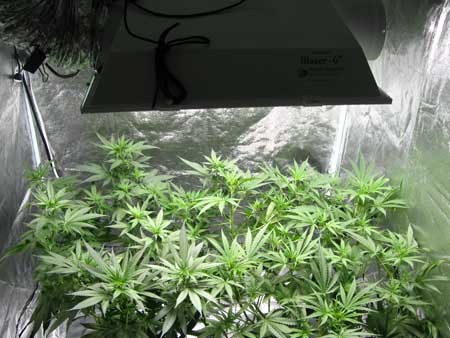
Light
The size your plant gets in this stage will have a huge impact on the final size of your plant.
This is the stage where your plants start making buds. This stage will last until harvest!
During this stage, you will need to…
We’re getting to the exciting part!
Most strains of cannabis begin this stage once they’re getting at least 12 hours of uninterrupted darkness a night. Autoflowering cannabis plants will start the flowering stage without needing a lighting change.
The flowering stage is where your plant goes through “puberty” and basically reveals whether they are a boy or a girl.
Unfortunately, for regular seeds, half your plants will end up female and half will end up male. That’s why a lot of growers prefer starting with clones or buying feminized seeds – all the resulting plants will grow into females.
As cannabis growers, we’re only looking for females as female plants are the only ones that make buds. Male plants just make pollen sacs (balls) that cannot be used for smoking.
A week or two after you initiate the 12-12 light schedule (or naturally in the wild), your plants will reveal their gender…
Female plants start growing wispy white hairs at the tops of branch joints. These are the pistils of her flowers/calyxes. You’ll get bunches of these calyxes growing on top of each other to make buds, and each calyx will have a few white hairs coming out of it. This is great news! It means this plant will eventually grow beautiful weed with buds/flowers/ganja that you can smoke.
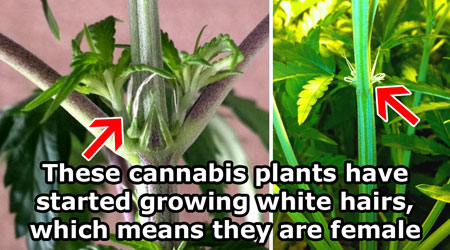
Male plants start growing balls/pollen sacs with no white hairs/pistils. Unfortunately, most male plants do not develop psychoactive properties like girls do in their flowers. Plus, male plants can pollinate your female plants and cause them to make less bud and more seeds. Therefore, most serious cannabis growers choose to remove and dispose of male plants as soon as they show their sex.
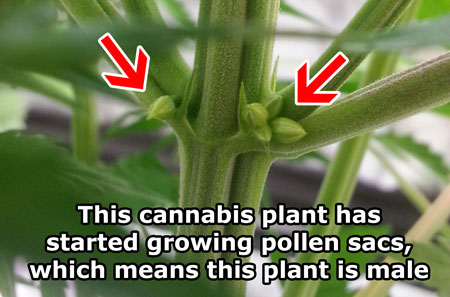
Note: The sturdy green growths are not pistils, they are always there on both boy and girl plants. When looking for gender, you’re specifically looking for white wispy hairs (pistils).
Ok, so you’ve gotten rid of your male plants. Your female plants will be growing more and more white hairs and before you know it, actual buds/flowers/trees are forming. Woohoo!
Now that you’re fully in the flowering stage, it’s best to keep temps slightly cooler, around 65-80°F (18-26°C) to produce buds with the best color, trichome production and smell. Learn more about what you need to do in the flowering stage to produce top-shelf buds.
It’s important to pay close attention to your cannabis plants during the flowering stage. This is because in this stage your plant is much more likely to suffer from nutrient problems as they’re focusing all their energy on growing buds.
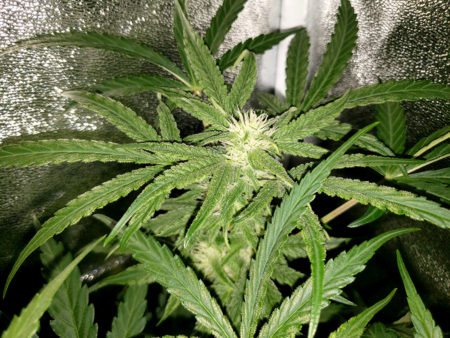
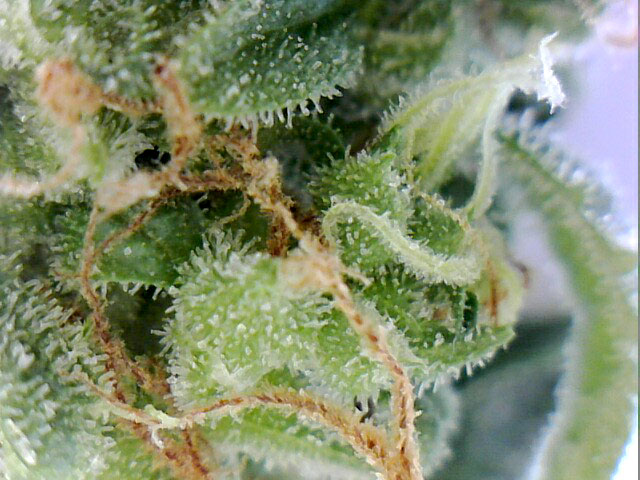
When to Harvest Weed? Is She Ready for Harvest?
The hardest part of growing cannabis for many new growers is waiting for the right time to harvest.
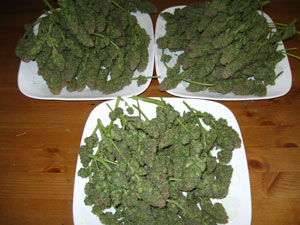
There are additional cannabis harvest methods that are much more precise – such as using trichomes to know when to harvest your buds.
I sometimes get asked how to harvest weed… (i.e. cut it down from the plant)
Just get a sturdy pair of scissors and cut the plant down in the most convenient way possible. Seriously…that’s it!
Trimming comes next; it’s one of the most rewarding and physically taxing parts of the entire grow, but it’ll be worth it!
After you have cut off and trimmed all of your glittery, beautiful fat buds, you will want to hang them upside down in a cool, dark place with plenty of ventilation so that they can dry out.
Dry buds slowly for best results and check often for mold or overdrying. You’ve worked way too hard to lose your crop now!
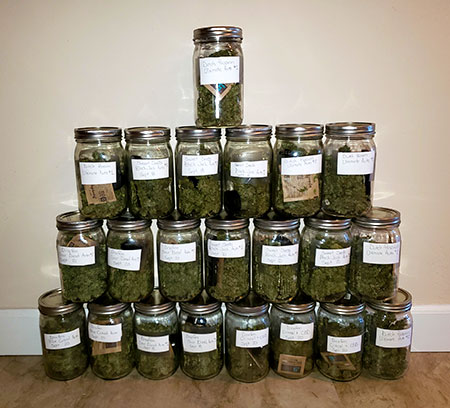
After your cannabis buds have dried (thin stems snap, but the thicker stems are still a bit bendy), it’s time to start curing them so they’re smooth, taste good, smell good, and have the best effects.
To cure your buds, put them in tightly closed quart-sized mason jars in a cool dark place. Fill each jar loosely about 3/4 of the way full.
For the first 2 weeks of curing, open the jars once a day for several seconds to get fresh air in your jars and release any moisture.
If your buds feel moist when you check on them, leave the tops of the jars off until the outsides of the buds feel dry to the touch. Too-moist bud is what causes mold!
Special products like “Boveda 62% Humidipaks” will make curing a lot easier, as they will naturally regulate the humidity in your jars.
After your cannabis has been curing for at least 2 weeks, and they haven’t felt wet every time you’ve checked the jars for at least a week, you can start opening the lid once a week instead of once a day.
Some people only cure their bud for 1-2 weeks total while others cure their bud for 30 days or more. Because you need to open the jar regularly, you can always sample some as it’s curing to get a feel for whether it’s done or not.
I personally think that cannabis tends to be more potent if you cure it for at least a month.
Curing for longer than 6 months doesn’t do anything, and cannabis can become less potent over time as THC turns to CBN. Keep your harvest in a cool, dry, airtight space for long-term storage.
That’s it! 10 Simple Steps and You’ve Got Your Very First Cannabis Harvest!
FOR SERIOUS GROWERS ONLY
Are you interested in… LED Grow Lights?
As I mentioned earlier, many models of LED grow lights are not suitable for cannabis growers, especially old LEDs and generic LEDs which weren’t tuned for a plant like cannabis.
Avoid old-technology “blurple” LEDs. They don’t get the best yields or growth when growing cannabis. When I’ve done side-by-side tests, the buds grown under blurple LEDs were also lower in THC than the same strains grown under another grow light
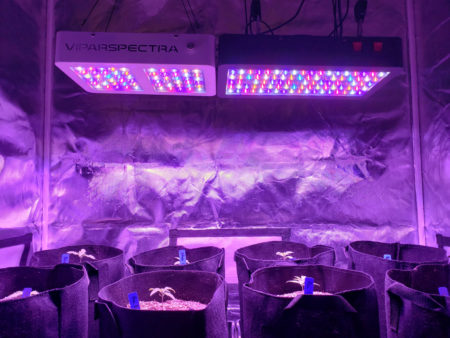
But when you’ve seen someone produce great cannabis with a particular brand or model of LED grow light, you know that the lights will work for growing cannabis. And if you have access to their grow notes, you’ll al so know exactly how to use the LED to get the best results.
And you’ve probably heard the incredible benefits of LEDs… low electricity usage, low heat, no ballast… you just plug the LED panel directly in the wall. Fans are built right in, and many high-quality models don’t need any additional cooling.
Modern LEDs that are good for growing weed produce wide-spectrum light that often has a pinkish tint, but never the “blurple” you saw on old LEDs
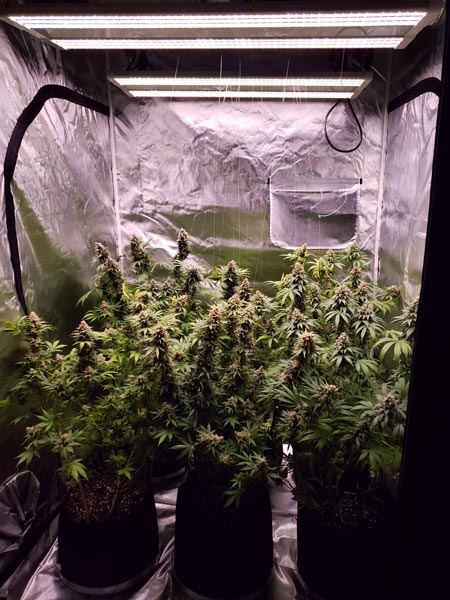
Wanna “steal” this article?
Here at GrowWeedEasy.com, we are dedicated to getting this information into as many hands as possible. You are welcome to republish this entire article as long as you do not edit, remove or otherwise change any part of it without permission.
Please don’t hesitate to Contact GrowWeedEasy.com with any questions.